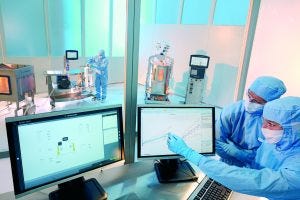Advanced Control Strategies at Biotech Week Boston
November 17, 2017

Advanced sensors, analyzers, and software have enabled manufacturers to achieve high levels of monitoring and control (thus a better understanding) of their processes. (WWW.SARTORIUS.COM)
Attendees at this year’s Biotech Week Boston (24–28 September) had the opportunity to participate in several preconference symposia on the first day, including one on advanced control strategies for bioprocessing and biomanufacturing. Chaired by William Whitford (GE Healthcare), the session included presentations from Dan Kopec (Sartorius Stedim Data Analytics), Markus Gershater (Synthace), Jonathan Bones (National Institute for Bioprocessing), Robert Thomas (Loughborough University), Chris McCready (Sartorius Stedim Data Analytics), and Victor Konakovsky (Newcastle University). BPI has collaborated with conference organizer KNect365 to present three of those here in edited format.
Key points included the rapid changes in the bioindustry that have brought on the need for expanded automation, monitoring, and control in all therapy classes, including cell and gene therapies. Presenters also focused on expanded use process modeling tools (e.g., multivariate analysis, design of experiments), technologies that allow for a better understanding of cell culture parameters (e.g., cell viability, glucose/lactate), and the need to get the bioprocess industry up to speed with other industries.
Industry Drivers: Whitford opened the session by discussing factors that are driving such changes. His list included the increase in computing power and the application of newer mathematical concepts, statistics, and algorithms to bioprocesses. Increasing knowledge of cell biology and “-omics” research into what is happening to cells during processing (especially in cell culture), advanced engineering of probes and sensors (including soft sensors), sampling methods, and modes of processing (perfusion, continuous, multicolumn), and a growing number of complex therapies (new vaccines, regenerative medicine, bioprinted tissues) also have brought major changes.
Market Dynamics: In his article, Kopec briefly mentions that market dynamics are driving automation forward. In his presentation he pointed out that processes that are developed in the United States are being transferred (mostly to Asia) much more frequently than ever before. “We need automation so that we can easily transfer those processes. Market dynamics in terms of drug approval rate have decreased so that one in 10 drugs is now approved whereas years ago it had been four out of 10. We have an increased pipeline of drugs and new modalities that we must work with these days. That underscores the need for automation. If we can automate our processes and remove the human element, they are easier to transfer. The industry then becomes more efficient with increased cost savings and meets those market dynamics.”
Sophisticated control systems also are making their way into bioprocesses. As discussed in the articles by McCready and Gershater, such technologies include model predictive control for “supervisory control,” tools that help manufacturers predict how a culture system will progress, systems to optimize a process to keep it on track, and new laboratory software that allows automated analytics for process development. Though not part of the symposium, Tietgens, et al. here present an additional study on monitoring fermentation systems in shake flasks with advanced sensor systems.
Maribel Rios is managing editor at BioProcess International; [email protected].
You May Also Like





